You never expect bad things to happen when boarding a cruise ship. Unfortunately, they do. And it’s not just lost luggage and itinerary changes that disrupt dream cruises. We’re talking flooded bathrooms with poop spilling over, buffet food poisoning, terrifying fires, and passengers vanishing into thin air. Welcome to the dark side of cruising—stories the cruise industry doesn’t publish in their glossy brochures.
Here’s the good news: most cruises go off without a hitch. Cruisers return to dock with sun-soaked memories and incredible stories of a fantastic vacation. So, no need to cancel any plans. In fact, cruise ships have the lowest death rate per billion passenger miles compared to road, rail, or flight. Many claim a cruise vacation is safer than a typical vacation on land.
So, let’s explore the wild, weird, and sometimes worrisome realities of cruising. Knowledge is power, right?
18 Shocking Cruise Nightmares You Can’t Ignore
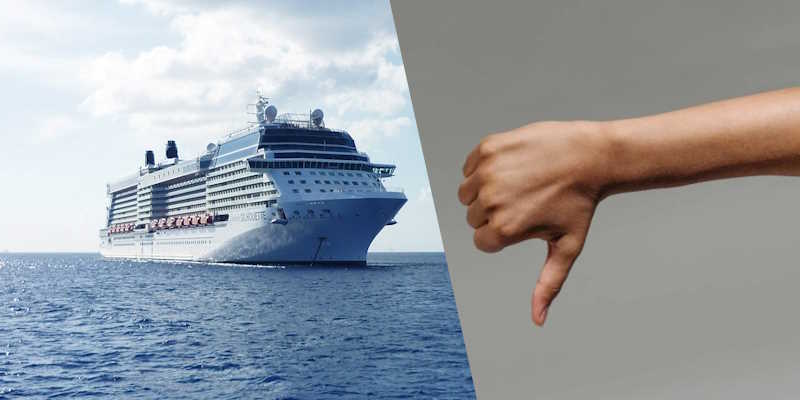
While most trips are smooth sailing, unexpected chaos can strike anytime. From lost luggage to onboard emergencies, learning about these shocking cruise mishaps might help you pack smarter and be more aware of your surroundings onboard.
Let’s dive in and find out what happens when dream cruise expectations run aground.
Lost luggage: Every cruiser’s worst fear
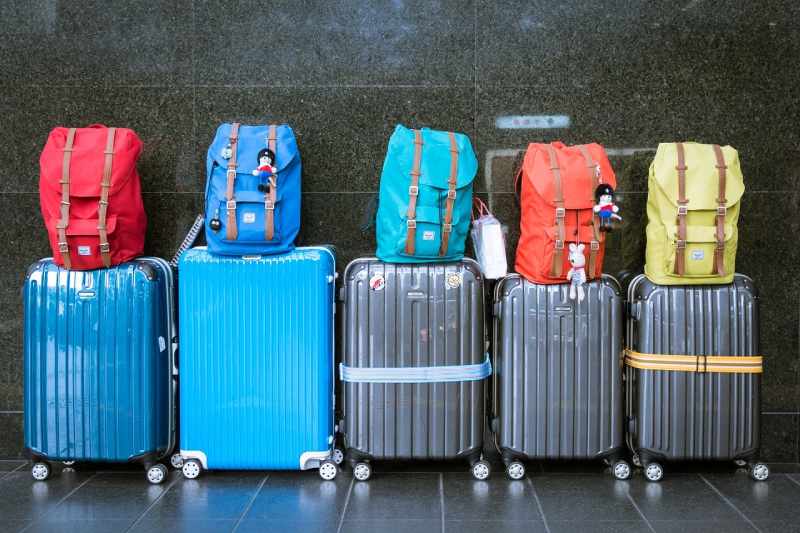
Lost or delayed luggage is the most common mishap that can ruin a cruise vacation. It could get mislaid on your flight to the disembarkation port. Or cruise ship staff could lose track of it after check-in. The frustration and disruption turn a dream cruise into a logistical nightmare.
One cruiser documented their hassle on TikTok when Celebrity Cruises dropped her luggage in the ocean on a European cruise. They had to pay for clothing and essentials and wasted a day sorting out the lost luggage. After a social media storm, the cruise line eventually agreed to compensate her $1,000, provide dining vouchers, and replace her luggage and all items.
Always pack a carry-on bag with essential medications, a change of clothes, swimwear, and important documents. Also, consider using luggage tracking devices to monitor your suitcase’s location.
Delayed disembarkation: Stuck in line, stuck in port
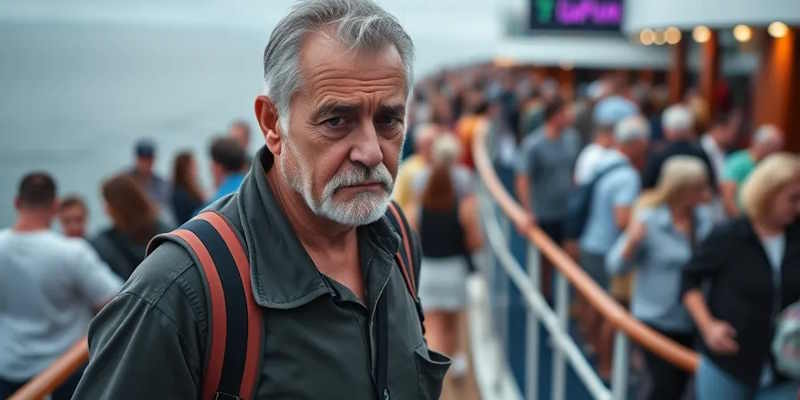
Nothing kills post-cruise vibes like hours of waiting to disembark. Passengers on one cruise shared horror stories of delayed customs clearances, crowded gangways, and malfunctioning systems that left them stranded onboard for hours.
Book a self-disembarkation to avoid the crowds and take your luggage straight off the ship.
Unexpected costs and hidden fees: The whopping bill you didn’t see coming
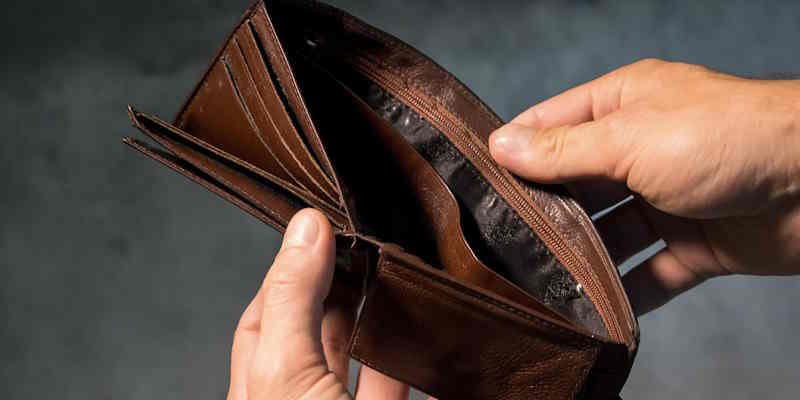
Nothing sours a relaxing cruise vacation like getting slapped with a huge final bill. Cruise lines are notorious for onboard rip-offs like expensive WiFi, outrageous drink prices, gratuities, and overpriced spa treatments. Forget about these costly add-ons? Be prepared for a shocking final bill on your last day.
Research fees before booking, prepay gratuities and hidden costs, and budget for extras to avoid post-cruise shock. It’s also recommended that you read up on common cruise ship rip-offs.
Missed ports or itinerary changes: Disappointment at sea

Imagine your disappointment when you’re left high and dry onboard because your bucket-list cruise destinations are canceled. Itinerary changes happen due to bad weather, technical issues, or political unrest. Unfortunately, missed ports can turn an exciting itinerary into a sea-bound letdown.
One cruiser shared their experience, “During our once-in-a-lifetime Mediterranean cruise, we had to skip three ports due to rough seas. It was so frustrating being stuck onboard for extra days.” Another cruise passenger vented frustration on social media after their Alaskan cruise replaced a glacier excursion with an “unexpected” extra day at sea.
While safety always comes first, these changes often leave passengers disappointed.
Build flexibility into your travel plans, learn how to spend enjoyable time onboard, and consider booking independent excursions that refund if plans change. Also, avoid booking a Caribbean cruise when hurricanes and storms frequently occur.
Food poisoning outbreaks: Buffets gone bad

Cruise buffets are legendary for their endless options of tasty treats. Unfortunately, they can also be breeding grounds for foodborne illnesses. Think Salmonella, E. Coli, and Staph infections. One passenger shared how a bad shrimp cocktail sidelined them for two days with stomach cramps, ruining their excursion plans.
A common reason for food poisoning is improper food handling—I’ve seen cruisers licking their fingers before grabbing more food! Some obnoxious cruisers ignore all buffet etiquette by not washing their hands and returning for seconds with dirty plates.
However, cruise lines aren’t off the hook regarding food poisoning outbreaks. The NCBI reports that sloppy practices like incorrect seafood temperatures and cross-contamination run rampant, especially at buffets. It’s a recipe for disaster—and for a ruined vacation.
Here’s the deal: Buffets have unspoken rules. Stick to hot, freshly prepared dishes. Avoid anything that looks like it’s been sitting out too long. And for the love of your stomach, wash your hands before you dig in. When in doubt, skip it. Food poisoning is one souvenir you don’t want.
Steer clear of risky dining decisions by learning the foods you should avoid on a cruise.
Contagious disease outbreaks: When illness spreads like wildfire

Cruises may be luxurious floating resorts but can quickly become quarantine zones. Tight quarters and shared spaces create the perfect storm for outbreaks. Norovirus, the notorious stomach bug, can infect hundreds within hours, leaving passengers quarantined and miserable.
One passenger recalled their experience onboard a Celebrity Mercury cruise ship in 2010, where a norovirus outbreak turned it into a floating quarantine. They said, “It just came out of me in streams, just gushes of it.” The cruise line even had to bring in extra medical staff to deal with the outbreak.
The worst case I came across was Royal Caribbean’s Explorer of the Seas cruise ship. On board, 626 passengers got a nasty norovirus infection. The outbreak ruined the voyage due to stomach cramps, diarrhea, and vomiting. The cruise was also cut short.
The 2020 COVID-19 outbreak on the Diamond Princess was a brutal wake-up call on how things can quickly go wrong. Over 700 passengers fell sick, and the ship became a floating prison of fear off Japan’s coast. One passenger described their deck as a ghost town, meals left at doors by masked staff who barely lingered.
Wash your hands often, avoid crowded buffets, and stay vigilant—prevention is key to staying afloat.
Limited medical assistance: Health emergencies without the right help

Cruise ships have medical facilities but no substitute for a hospital. Of course, medical staff onboard are trained for emergencies but are limited in resources and equipment. Serious conditions may require evacuation, which is both costly and stressful.
One passenger shared how they had to be airlifted after suffering a heart attack onboard, only to face an astronomical bill. Another recalled a sprained ankle that couldn’t be properly treated until they reached port.
Purchase travel insurance with medical coverage for cruise vacations and pack a basic first aid kit with essentials like pain relievers and motion sickness tablets.
Accessibility challenges: When cruises aren’t as inclusive as promised

Cruises promise accessibility for all, but the reality? For some passengers, it’s obstacle after obstacle. Older ships may lack adequate facilities, and shore excursions can be challenging due to uneven terrain or limited transportation options.
One traveler shared their frustration online about narrow doorways and inaccessible restrooms, making navigation difficult. Another recounted a shore excursion where the promised “accessible” bus had a steep, non-retractable step, making it impossible to board.
The good news is that things are getting better on cruise ships for people with mobility issues. One survey in the U.K. found that 89 percent of sea-faring cruise passengers with a disability are satisfied with the experience. Before booking, research the ship’s accessibility features and consult with the cruise line about specific needs.
Crime on cruise ships: When the dream vacation turns dark

There’s always “trouble in paradise.” And cruise ships are not immune from the dark realities of crime. Anything from petty theft to physical attacks and serious sexual assault is reported, with many more cruise ship incidents probably flying under the radar.
The Washington Post reported that the FBI received 131 crime reports of a sexual nature. Unfortunately, sexual crimes are the most commonly reported crimes onboard.
Should you be worried about getting mugged onboard? Thankfully, cruise ships are some of the safest vacation locations. Just think: 24/7 camera surveillance in all parts of the vessel helps keep cruise ship passengers safe. Also, a robust security team is always on hand to resolve disputes or stop fights.
Always secure valuables in the cabin safe, stay vigilant in public areas, and report any suspicious behavior to ship security immediately. Like anywhere, avoid lonely, dark, or isolated places, and never leave a drink unattended.
Rough weather and rogue waves: Nature’s wrath at sea

Cruise ships are built to handle various sea conditions. But storms and high waves can set you up for a bumpy ride. Imagine looking out the port window with the horizon appearing and disappearing, plates flying off tables, glasses shattering, and passengers gripping handrails. Then you feel your stomach starting to go.
Here are some horror stories of what can happen on a cruise ship in bad weather.
Imagine being on board in a violent storm when the ship loses power and starts drifting toward rocks. That was the shocking experience of 1,300 passengers in the Viking Sky off the coast of Norway. Rescuers had to airlift 479 passengers to safety, and many sustained injuries that included broken bones, cuts, and bruises.
In April 2005, passengers on the Norwegian Dawn cruise ship were struck by a 70-foot rogue wave off the coast of Georgia. The resulting damage to the vessel injured four passengers. The colossal wave shattered windows and flooded cabins, leading to a temporary delay in the ship’s journey.
Want to avoid sheer panic and terror onboard a cruise ship battling severe storms? Avoid cruising in the most dangerous seas in the world.
Read more: The Worst Cruise Ship Cabins to Avoid Booking.
Floods, power outages, and other cruise nightmares when the ship breaks down

Cruise ships may feel like floating luxury hotels, but when systems fail, expect the worst. Flooded cabins, free-flowing human waste, pitch-black hallways, and broken air conditioning turn a relaxing getaway into a floating cesspit. The worst thing? Being stuck at sea, you have no escape.
Imagine your dream cruise getting dubbed the “poop cruise.” That’s what happened to 4,000 passengers aboard the Carnival Cruise Line ship “Triumph” in 2013. An engine room fire turned the vessel into a floating disaster, adrift for days without power or plumbing. Passengers talked about raw sewage in the hallways and having to “go” in biohazard bags. Anything but a triumphal carnival!
Then, in July 2023, the Marella Discovery’s engine room caught fire near Amber Cove. Though the crew extinguished it quickly, 1,800 passengers saw their vacation go up in smoke as the voyage was canceled, and everyone was sent home early. Disaster doesn’t always wait for rough seas.
Shore excursion accidents: Adventures that turn dangerous

Shore excursions are supposed to be the highlight of your cruise—until you slip, twist an ankle, and hobble back to the cruise port. One cruiser told me about their “gentle hike” that ended in a medical evacuation after a severely broken ankle. I’ve also read about horrific accidents on winding roads that resulted in fatalities.
Excursions are thrilling, but they’re not foolproof. Always check safety reviews, and don’t trust every “easy” activity label. You don’t want your biggest adventure to be an ambulance trip to the ER.
Gone without a trace: Accidental falls, overboard incidents, and mysterious disappearances

Cruise ships promise adventure but for some—the last stop. Accidental falls, drinking too much, suicides, and other overboard incidents occur 20 to 30 times annually. In some cases, it’s possible to rescue them, but most MOB (man overboard) incidents result in fatalities.
Mysterious disappearances add even more intrigue—passengers simply vanish into thin air. Here are a few baffling cases:
- In 1998, Amy Lynn Bradley, 23 years old, mysteriously disappeared without a trace from her cabin. No one ever found out what happened to her.
- Honeymooner George Smith IV vanished from a cruise in 2005. The FBI was reluctant to investigate thoroughly, and the family says there was evidence he was thrown overboard.
- In 2011, a crew member on the Disney Cruise Line ship “Wonder” vanished without a trace and has never been seen since.
- Jayden Hill was caught on CCTV jumping off the Carnival Corporate ship “Elation” in 2023 in the Bahamas. Despite a 1,300-square-mile search, no one ever found his body.
Safety barriers exist for a reason—respect them because the ocean’s frigid waters don’t give second chances. Read up on things you should never do near a cruise ship.
Out-of-control fires: Chaos in the middle of the ocean

A fire in any place is bad enough, but navigating narrow, dark, and possibly smoke-filled corridors on a cruise ship is a frightening experience. So, it’s no wonder cruise lines ban smoking on board ships apart from a few designated areas.
A stray cigarette was to blame for a catastrophic fire on the Star Princess in 2006. One cruise line passenger died, 11 were injured, and over 100 rooms were scorched. A passenger said, “It was chaos! People were running in nightgowns and robes, and I saw several people with blackened hands and faces.”
Shipwrecks and groundings: When cruises go catastrophic
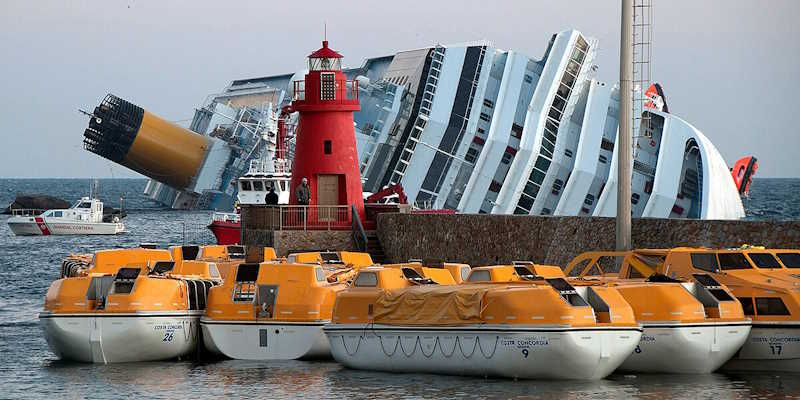
Cruise shipwrecks are rare but are catastrophic disasters when they happen. The most infamous is the Costa Concordia tragedy in 2012. It is described as one of the worst cruise ship disasters in modern times. The ship ran aground and keeled over. Why? A tragic catalog of human errors.
What was worse than the captain’s incompetence was the lack of crew training in an emergency. One survivor wrote, “It seemed the staff didn’t know what to do in an emergency. We were left alone as the abandoned ship sirens screened.”
Groundings are less deadly, just as disruptive. In 2015, the Norwegian Dawn cruise ship—the same one hit by a rogue wave in 2005—ran aground on a reef near Bermuda. Thankfully, it was refloated quickly, and no injuries were reported.
Attend safety muster drills during your first hour on board. Knowing how to put on a life jacket and get to muster stations can make all the difference when minutes matter. In an emergency, preparation isn’t optional—it’s survival.
Want to stay one step ahead of any danger? Learn the secret cruise codes the crew uses to alert each other—and you’ll know about disasters or issues before anyone else.
Environmental hazards: The hidden cost of cruising

Cruise ships may look impressive, but their environmental impact is far from positive. These floating cities produce mountains of waste, discharge untreated sewage (black water), and pump out harmful emissions caused by dirty fuel. Ports in Europe, like Venice, are battling pollution and overcrowding, with locals protesting against cruise tourism.
According to one report, a single cruise ship pumps out more harmful emissions than 12,000 cars. Cruise ships generate a ton of waste daily.
However, it’s not all doom and gloom—the cruise industry is trying to clean up its act. Here are some initiatives the cruise industry is promoting to become more eco-friendly and reduce climate impact:
- Use cleaner fuels, like low-sulfur fuel
- Plug into shore power while in port
- Reduce waste, including food waste
- Promote recycling
- Ditch single-use plastic water bottles
- Invest in advanced sewage treatment systems
Crew misconduct: Hidden cameras and other shocking violations

Cruise ships are meant to be safe havens, but some rare cases of crew misconduct have shaken passenger trust.
Some of the stories I came across include sexual attacks, attempted stabbings, trying to push a passenger overboard, and fighting. The most shocking was a Royal Caribbean worker sentenced to 30 years in jail for installing hidden cameras in rooms. Read more about it here.
Thankfully, cruise ships are generally safe for all passengers and crew. However, stay vigilant, report suspicious activity, and trust your instincts onboard.
Curious about what really happens behind the scenes? Discover the shocking truths cruise ship workers reveal about life below deck.
Pirate attacks: Danger on the high seas

Don’t think piracy finished in the Caribbean in the late 18th century. It’s alive and kicking in and around the Horn of Africa. Imagine the terror aboard the Seabourn Spirit when a bunch of modern-day pirates fired machine guns and rocket-propelled grenades at the ship! Thankfully, quick-thinking crew members used their skill, experience, and a state-of-the-art sonic defense system to outrun the pirates.
These rare but terrifying incidents remind cruisers that not all waters are calm. Modern-day pirates often target smaller luxury cruise ships or yachts, but vigilance is essential. Cruise lines now avoid high-risk areas like the Horn of Africa and the Gulf of Aden, proving that the high seas still have their dangers.
Want to avoid putting yourself in harm’s way? Check out what passengers should never do near a cruise ship—these tips could save your life.
My Thoughts
Cruising is one of the best ways to explore the world, but sometimes, things go wrong. Knowing the bad things that can happen on board helps you plan smarter and enjoy the experience without surprises. Cruising is still an unforgettable adventure—one of the best you can have. Just go prepared, and you’ll sail through.
Related articles:

